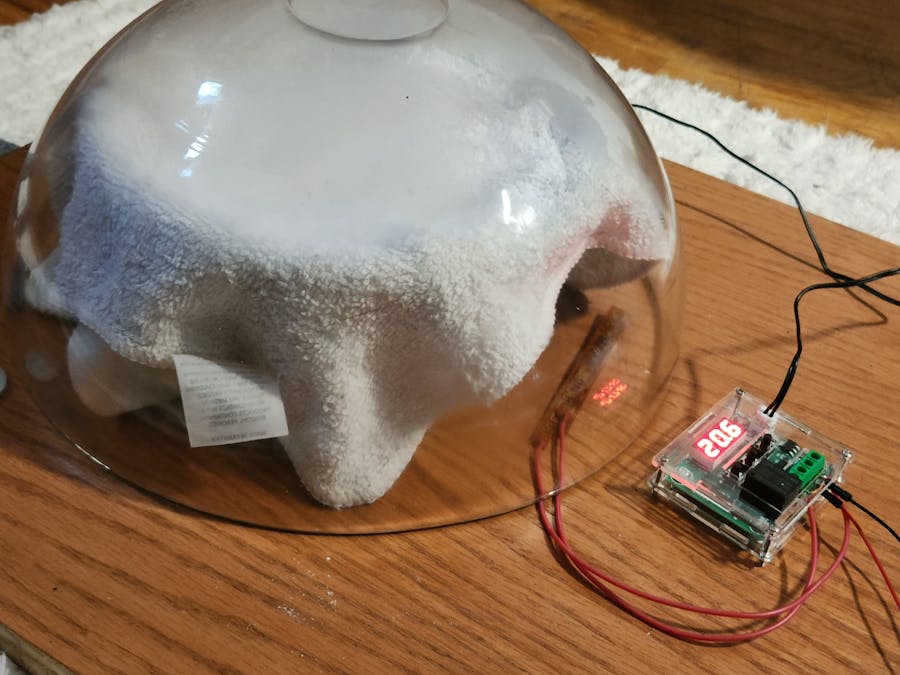[to the judges of the Smarter Sustainable World Challenge: I wasn't able to get the Nordic Thingy:53 component of this project working within the contest's timeframe. I'm completely alright with that disqualifying me from the contest, but I fully intend to continue working on this project using the hardware.]
My housemates and I have a lot of projects, many of which involve keeping lifeforms alive (see: chicken coop). At our location in Boulder, Colorado, the default environment is high-altitude and extremely dry, and unfortunately, many organisms need warm, humid environments to grow. My sourdough kept drying out, and especially in the winter, the house would be too cold for it to metabolize quickly. Similarly, one of my roommates had tried to grow mushrooms, but wasn't able to create a humid enough environment for them to fruit.
Planning the System[Project proposal and parts list process]
Testing HumidifierUsing the Nordic Thingy:53I found the Nordic SDK straightforward to set up (as someone who gets overwhelmed by installing new environments!) and to get basic functions running through the provided examples. However, when it came to working directly in the code and accessing the data exactly how I wanted to, I wasn't able to modify any of the examples I chose to compile and build correctly.
The vast majority of this project became an investigation of what were the lowest-cost, lowest-power means of achieving temperature/humidity controls in an enclosed environment, which meant that a lot of my work was done with loading example code onto the Thingy:53 and ESP32 and powering on individual components to get some sort of low-fidelity system that could actually effect the organisms' growth. It was difficult to take time away from testing (since one trial/batch could take several days) to focus on coding and wiring.
I personally found that the biggest improvement to my previous sourdough set-up was having much more precise, real-time measurements of temperature and humidity. Two sets of measurements were key: the environment within the chamber (immediately near the sample), and the ambient conditions within the room (which varied greatly with different rooms of the house, and even day-to-day in the transitional fall weather).
With a couple different means for heat and humidity outputs, I could also test how quickly these outputs affected the chamber conditions, and estimate their power usage. This would also depend on the enclosure size/other characteristics, and an appropriate enclosure could also help minimize the power usage. For housing a batch of sourdough baking, this large glass salad bowl I found at Goodwill seemed pretty ideal, as it was transparent, heatproof, and I thought I might be able to create a miniature greenhouse.
RoadmapA lot remains to be done, and I'm still working on my ability to prioritize tasks in a complex project.
- Mushroom/larger sample setup: need to find a larger glass tank
- System integration: get BLE communications working WITH the sensor data.
- Interface design: continue working on a progressive web app (PWA) to remotely access the sensor readings/output settings














Comments
Please log in or sign up to comment.